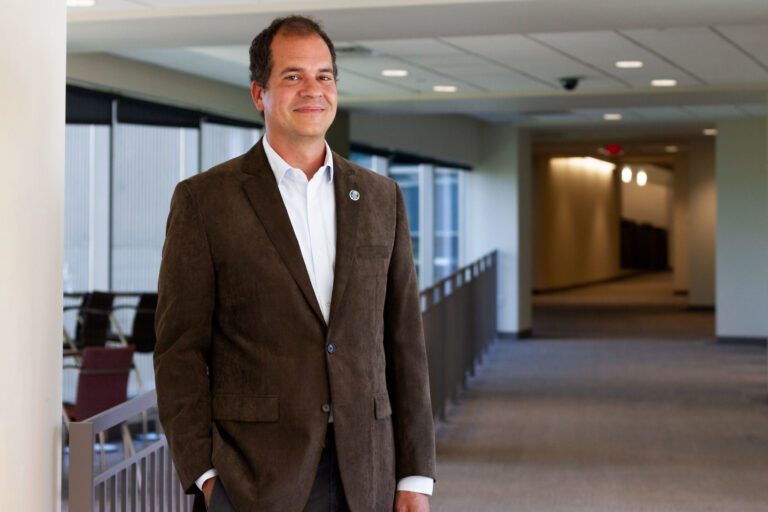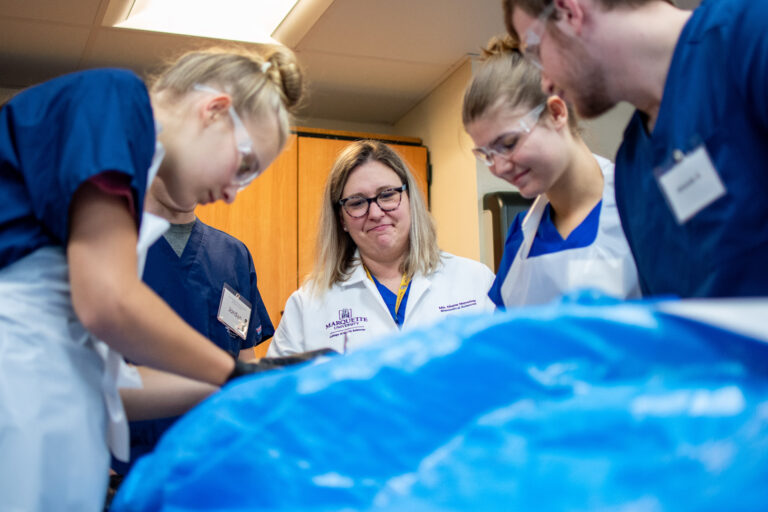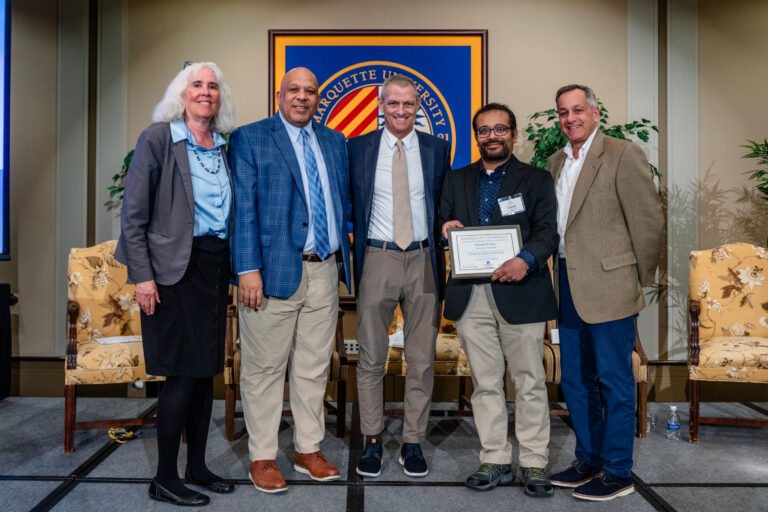It’s a complex skill that takes years to fully master, but our everyday world is built upon our ability to walk and move. For stroke survivors, losing the ability to walk can be debilitating. That’s one of the reasons why a favorite part of Dr. Allison Hyngstrom’s job is helping stroke survivors optimize their walking function.
“People living with stroke will often tell me I want to walk farther, but it’s like my leg muscles aren’t listening to my brain,” says Hyngstrom, the professor and chair of the Physical Therapy Department, of her work with stroke patients.
But intensive physical therapy isn’t always enough, and stroke survivors who are able to recover their walking ability often struggle with increased muscle fatigue during movement. The muscles get tired more quickly post stroke and this can limit people’s ability to walk long distances.
Hyngstrom’s background in neuroscience told her that damage to the brain due to the stroke probably played a role in this fatigue, but that didn’t mean it was the only factor. So she turned to longtime collaborator Dr. Matthew Durand, associate professor of physical medicine and rehabilitation at the Medical College of Wisconsin, who has deep expertise in vascular biology.

With a new five-year, $3.2 million R01 grant from the National Institutes of Health, Hyngstrom and Durand are launching a study to investigate the mechanisms by which improving blood flow helps reduce muscle fatigue in individuals who have had a stroke. “Our collaboration is very powerful because we’re leveraging the strengths of our two institutions together. It’s the best of both worlds,” Durand says.
Regardless of whether you’re bodybuilding, swimming in a pool or walking around your home, using your muscles requires complex signals from the nervous system that tell the muscles when and how to move. Additionally, your muscles also require sufficient amounts of oxygen- and nutrient-rich arterial blood to match the increased energy needs of the muscle. The entire process, which most of us do without a second thought, is a complex physiological symphony, Hyngstrom says. And a stroke can profoundly alter multiple parts of this process.
When Hyngstrom noticed that many of her patients reported high levels of muscle fatigue that limited their ability to complete their prescribed exercises during physical therapy sessions, the problem wasn’t a lack of effort. Quantitative measurements of the muscle’s ability to generate force over time showed marked decreases.
Hyngstrom and other researchers had already investigated the role brain damage could play in that weakness, by altering the ability of motor neurons to tell muscles to flex or contract. Neurology alone, however, might not explain why so many people post-stroke also encounter endurance problems. When she struck up a conversation with Durand at a local meeting 12 years ago, Hyngstrom began to wonder whether vascular issues could play a role by limiting the oxygen and nutrients available to working muscles. “No one had really studied peripheral vascular function in people who had a stroke. It seemed like a really good opportunity to collaborate,” Durand says.
The team has been working together ever since. “It’s both a unique and potentially powerful approach to target the blood vessels and cardiovascular system for rehabilitation therapies because while they weren’t directly affected by the stroke, they still don’t seem to be functioning properly. If we could somehow optimize cardiovascular function, then maybe we could improve muscle function, too,” Hyngstrom says.
Although peripheral blood vessels might not be directly affected by a stroke, the pair’s early work showed that after stroke there were differences in how blood flow was regulated to the exercising muscles. The pair then linked these vascular changes to increased fatiguability in the muscles on the side of the body impacted by the stroke. In their newest NIH grant, Drs. Durand and Hyngstrom are investigating the physiological changes that are responsible for this impairment in blood flow during exercise. Specifically, they are studying whether a process called functional sympatholysis, which allows blood vessels in the contracting muscle to remain dilated to provide adequate blood flow during exercise, is intact or impaired. One unique aspect of their study is that they will be able to directly examine the response of the small blood vessels to specific vasodilator and vasoconstrictor molecules that are central to the functional sympatholysis response.
The study of blood flow regulation during exercise is highly technical and required Drs. Hyngstrom and Durand to recruit additional collaborators to help them perform these analyses. Dr. Chris Sundberg, assistant professor of exercise science, and Dr. Sandra Hunter, professor of exercise science at Marquette, are exercise physiologists and will use MRI scans to measure metabolite buildup in the exercising muscle. Dr. Brian Schmit, Hammes Family Professor in the Marquette and MCW Joint Department of Biomedical Engineering, will provide expertise in neuromuscular fatigue and muscle function.
The final aim of the work is to determine whether a process called ischemic conditioning, which uses a blood pressure cuff to briefly alter muscle blood supply, can help stimulate the neural and cardiovascular response to exercise and improve exercise performance. By combining work on ischemic conditioning with the molecular underpinnings of post-stroke exercise fatigue, Dr. Hyngstrom hopes to identify the most effective techniques that will maximize endurance and physical function for patients.
“This study will shed a light on how the cardiovascular system and neuromuscular system work together during exercise, and that will open the door to a lot more targeted therapies to improve stroke outcomes,” Hyngstrom says.



